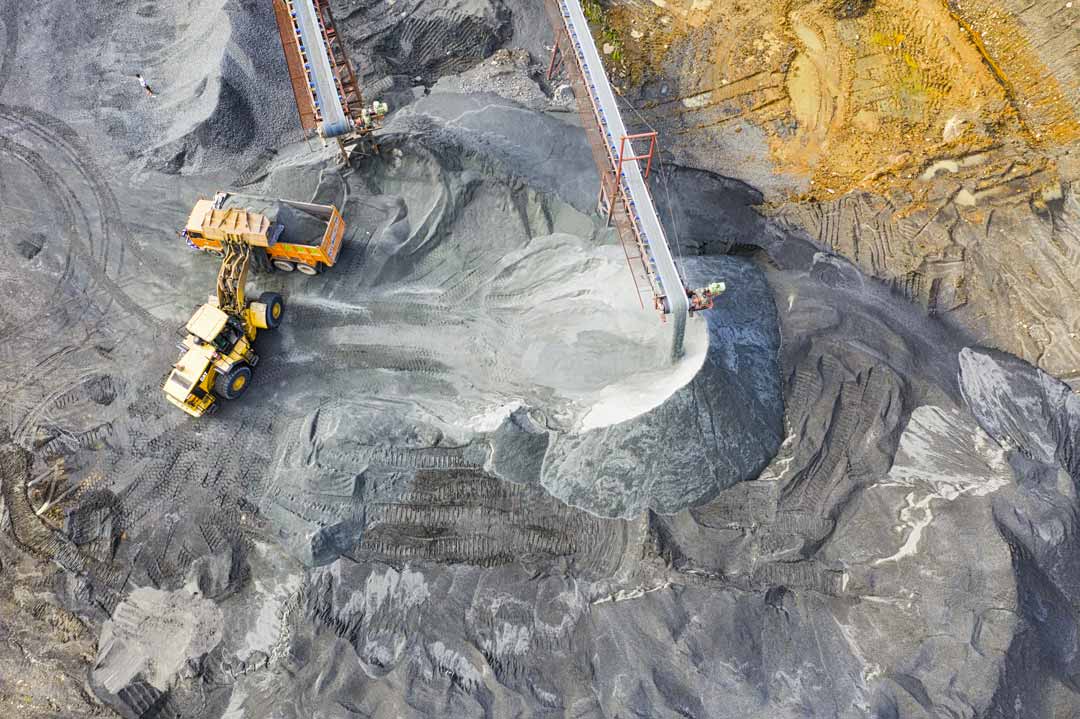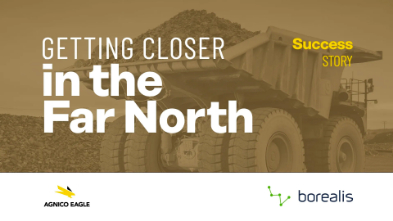In recent years, the many, diverse stakeholders who are impacted by the mining industry have been evolving alongside the industry itself, as it works to transition to clean energy.
In the introduction to their 20th Mining Report, published in July 2023, PwC quotes Monica Banting, National Leader for Mining Services and Partner at PwC Canada: “The high-demand era of critical minerals is now: Miners will have to reinvent themselves for long-term growth and prepare for global transition to clean energy.”
This statement neatly sums up the report’s findings: that over the next 20 years, the mining sector will be shaped by the energy transition. In particular, mining companies will have to “deal with the growing role that governments, and new players like car manufacturers, are playing in the sector.”
There will be no shortage of challenges for this industry in the decades to come, and one of them will undeniably concern stakeholder management.
Who are these stakeholders? What are their roles, interests and significance? And what are the advantages of engaging them successfully?
Who are the stakeholders in the mining industry?
The mineral and metals industry is at a turning point, and faces a unique challenge. Along with participating in the collective effort to achieve sustainable development and protect the environment, the industry must increase production to support the global supply chain with the materials it needs to continue the transition to a carbon-free future.
Critical minerals such as copper, lithium, cobalt and graphite are in increasing demand, driven by global targets for net-zero emissions. This includes the development of electric vehicles and the demand for clean energy from wind farms, solar panels and nuclear power.
Through necessary adjustments, the mining sector’s relationships with stakeholders is growing even more complex.
Stakeholder groups in the mining industry
Stakeholders in the mining sector include anyone who is involved in mining projects or who may be affected by the industry’s activities. These stakeholders typically fall into the following categories:
- Shareholders and investors
- Governments at all levels
- Local communities
- NGOs
- Indigenous communities
- Environmental groups
- Marine stakeholders (commercial fisheries, maritime and shipping communities, offshore infrastructure, etc.)
- Suppliers
- Company employees and others
- Trade unions
- Other mining companies
- Sector groups
- Customers
Mining company stakeholder analysis
Certain stakeholders inevitably occupy a prominent place among all the entities and individuals affected by a mining project.
Detailed analysis of the key stakeholders for a mining company, their roles, and their interests
Shareholders and investors
Investors are, naturally, among the industry’s most important stakeholders. Their role is essential: without financial resources, there can be no project. Their interests? Obtaining a good return. That’s why investors expect mining companies to keep a close eye on operating costs and report regularly on their activities.
Shareholders are also partly responsible – along with customers – for the mergers and acquisitions (M&A) that have taken place in the sector in recent years. In the context of the energy transition, they are demanding diversified portfolios and sustainability commitments, according to GlobalData. These changes in the mining landscape are set to continue over the coming years. They will also contribute to the growing complexity of stakeholder relations management.
Governments of all levels
As the world transitions to cleaner sources of energy, governments have a vested interest in seeing clean energy projects succeed – even more so when these projects create jobs and stimulate the economy. In fact, many governments around the world offer support measures to mining companies wishing to set up on their territory.
Of course, despite their enthusiasm, they must also ensure compliance with the laws and regulations that have been established to protect communities and the environment. It is also their role to grant the necessary permits for operations at all stages of the project – exploration, construction and operation – and to validate reclamation plans.
Indigenous and local communities
The role of indigenous communities in relation to mining companies is to defend their rights, particularly in terms of sovereignty over the use of their lands. They want to have a say in ecological decisions at every stage of the mine’s life. They are also concerned about the developers’ responsibility towards the site once the operating phase is over, as they have had bad experiences in this area in the past.
Indigenous communities also share with other local communities a desire to be respected. Not only do they want to maintain their quality of life, but they also want the projects to benefit their members by, for example, providing them with valuable jobs and the training to access them. Indigenous and local communities want tangible benefits in return for their concessions.
Environmental groups
Even if they aren’t rights holders like indigenous peoples, the environmental groups that stand up for the planet are loud and clear. They are the watchdogs of environmental issues, with a particular interest in protecting the environment, conserving biodiversity and promoting sustainable development.
The commitment of these groups towards environmental issues is disinterested. Activists are not fighting for their group or for themselves, but for society, so that the world has a future. These groups work on several fronts, as they try to influence not only companies, but also governments, the decision-makers responsible for setting the rules.
Suppliers and partners
In the context of a vulnerable global supply chain, the role of suppliers is crucial. And the sustainable development challenges facing the mining sector in the coming years should confirm the importance of establishing excellent relationships with them.
Among these challenges? Increasing on-site renewable technologies, developing new mining operations and refining processes with low carbon emissions.
These new realities will mean that “Miners will also need to work with other industries, such as car companies and battery manufacturers as original equipment manufacturers (OEMs), through joint ventures, partnerships and offtake agreements to secure supply.” says the 20th PwC – Mining report.
Customers
Let’s not underestimate the role of customers, as they are directly linked to the pressure exerted on the sector. Companies in the aerospace, defense, telecommunications, IT and clean energy sectors are simply looking to meet their production needs. And this is forcing mining companies to review their management and operating methods in order to remain profitable.

How do these stakeholders influence the operations and strategies of mining groups?
Stakeholders have the potential to greatly influence the activities of mining companies.
Governments and investors
Unsurprisingly, governments and lenders are among the most influential stakeholders.
From the earliest stages of a mining project, meeting the conditions to secure government approval can be incredibly challenging. Without the right tools to manage data efficiently, many projects fail to meet these requirements and are forced to throw in the towel.
Traditionally, feasibility studies focused on geology and engineering to determine the nature, volume and quality of the mineral, and the best method of extraction. It was assumed that the need for manpower, equipment, transportation, energy and permits would be easily met.
Today, projects have to compete for limited resources. The supply chain is struggling, and recruitment can be difficult. Investors and governments want to understand how companies will overcome these potential obstacles. In the case of regulatory failures, the consequences can be disastrous. “Regulatory approval has become a major issue, and more than one large-scale project has failed to see the light of day due to delays or permit refusals. In some cases, this has cost owners hundreds of millions of dollars,” according to a KPMG report on mining projects.
Indigenous peoples
Many countries around the world have laws requiring mining companies (and others) to consult their indigenous populations and take their rights and interests into account. This obligation can be found, for example, in Canada’s Mining Act. Peru passed its Prior Consultation Act in 2011. And in the United States, although laws may vary from state to state, two national laws require consultation with indigenous peoples for various projects: the National Historic Preservation Act and the National Environmental Policy Act.
In this context, it is clear that the involvement of these groups will shape corporate decisions and operations.
Environmental groups
Environmental groups can influence mining projects in a number of ways. These include:
- influence public opinion by raising awareness
- advocate for stricter environmental regulations, more comprehensive impact studies and better enforcement of existing laws
- discuss environmental risks with investors and other stakeholders
- support local communities in their efforts to make their voices heard
Suppliers and partners
Due to their products, services and expertise, suppliers and partners are directly linked to a mine’s production capacity. Their influence can be linked to economic, logistical or operational factors, making them essential stakeholders in strategic planning.
Limited access to necessary supplies and services can have an impact on project timelines and costs. The same applies to the inability to provide support and maintenance services.
On the other hand, suppliers’ expertise can have an impact on project efficiency and safety, particularly through the introduction of innovative technologies. And occasionally, partners are involved in collaborative decision-making processes, particularly on large-scale projects. Their input is more likely to shape project plans and strategies.
Customers
Customers often define the scope and objectives of mining projects according to their own strategic objectives and operational needs. Their requirements determine project planning, design and execution.
They may also take on the role of investors, which inevitably increases their degree of influence.
Customers may have expectations or requirements regarding production targets, quality standards, safety objectives and environmental sustainability criteria. Their risk tolerance and concerns about risk mitigation strategies may influence their decisions regarding the project.
Stakeholder engagement in mining
Benefits of stakeholder engagement for mining companies and stakeholders
There are many advantages to effectively engaging stakeholders in mining projects. And these benefits underscore the importance of giving the exercise the attention it deserves. In particular, they contribute to project success, social acceptance and the achievement of sustainable development objectives.
Responsible stakeholder engagement makes it possible to:
- Take into account the concerns and needs of communities (local, indigenous, vulnerable, etc.) in order to obtain social license to operate.
- Encourage understanding and build trusted relationships
- Identify and prevent certain risks associated with the project
- Comply with regulations, as many authorities require mining companies to report on their engagement activities
- Prevent potential conflicts through knowledge and understanding of the parties’ realities, and by creating an environment conducive to discussion and negotiation.
- Benefit from their knowledge and expertise, innovations and best practices
- Reinforce their positive reputation by demonstrating transparency and a sense of responsibility
Overview of the stakeholder engagement process in the mining sector
The earlier in the project that stakeholder engagement activities begin, the more beneficial they are. This is because they provide an opportunity to identify and understand stakeholders’ concerns, needs and expectations, and to build relationships of trust with them.
Stakeholder engagement in the mining sector typically involves the following steps:
- Stakeholder identification: Identify groups and individuals likely to have an interest in or be affected by the project.
- Stakeholder analysis: Assess their needs, expectations, concerns, interests and degree of influence. Group and prioritize these groups by importance.
- Mobilization plan: Define objectives, personalized communication and participation methods, and timelines for each stakeholder, taking into account their diversity and specificities.
- Communications: Communicate with stakeholders to inform them of the project, its objectives and benefits, and the company’s interest in listening to what they have to say.
- Engagement activities: Organize consultations, engage in dialogue, gather feedback, collect and analyze qualitative and quantitative data, and integrate this information into the strategic plan.
Case study: Stakeholder engagement in the mining sector
Here’s an example of a mining company that successfully engaged with stakeholders.
Canadian mining company Agnico Eagle Mines Limited (AEM) has been operating in Nunavut since 2007. The company has always been committed to acting in a socially responsible manner and contributing to the well-being of the communities in which they operate, the Inuit communities of northern Canada. The company therefore sought a software solution that could support their efforts and improve their performance in these areas.
In particular, they had concerns about tracking communications and data, which was done using e-mails and spreadsheets. The difficulty of retrieving information quickly caused challenges, as did tracking issues of all kinds and the evolution of community involvement.
After examining a dozen different systems, AEM decided on Borealis, a specialized stakeholder management software perfectly suited to the tasks involved in stakeholder engagement.
Thanks to the practical features in Borealis, AEM has significantly improved their practices:
- Better communication with stakeholders
- More efficient execution
- Improved decision-making
- A strategy better aligned with community input and feedback
- Easier follow-up
In concrete terms, these adjustments have enabled AEM to:
- Measure their social acceptability indicators better
- Assess the effectiveness of engagement activities and the level of stakeholder confidence
- Nurture healthy relationships with communities
- Evaluate the success of community investment and development programs
Now that they can measure social performance as rigorously as the other aspects of their operations, AEM has optimized their stakeholder engagement program and built stronger relationships with communities.

Become more efficient by keeping track of your community relations
Key Points
- The minerals and metals industry is changing as a result of new markets driven by new technologies and sustainable development objectives.
- Stakeholders in mining projects are following this evolution, with the arrival of new players, and increased government presence related to environmental requirements.
- The number and diversity of stakeholders – each with their own interests, concerns, power to influence, etc. – make relations with them complex, and demand impeccable management of these relationships.
- Some stakeholders have the power to significantly influence the operations and strategies of mining companies. These include investors, governments, indigenous communities and environmental groups.
- Effective stakeholder engagement has many benefits, which ultimately help teams achieve social acceptance, meet sustainable development goals, and ensure successful project outcomes.
- Beyond the evolution of the minerals and metals sector, sound and effective stakeholder management can only lead to positive outcomes.
- Borealis software was designed specifically to help companies build better relationships with stakeholders, and consequently improve business performance.
For nearly 20 years, Borealis has been helping companies around the world achieve their goals with user-friendly tools that facilitate a multitude of tasks associated with stakeholder engagement.
To find out more about all the features Borealis has to offer, please contact us.





